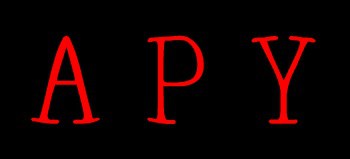(2003) Sofia Coppola
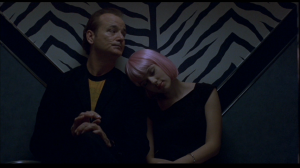 I have begun my #52FilmsByWomen journey with Sofia Coppola’s smash-hit Lost in Translation. It’s a film that has long featured on my mental ‘must-watch’ list due to the fact that it starred the ever-excellent Bill Murray and has a pretty revered status amongst, well, everyone. Written and directed by Sofia Coppola, daughter of Hollywood director Francis Ford who first made a name for herself with The Virgin Suicides (1999), my expectations were pretty high. The film was nominated for a total of four Oscars, of which Coppola won for Best Original Screenplay and became only the third woman ever (!) to be nominated for Best Director. Upon watching I think it’s clear the film would have had a real shot at taking home all four nominations had 2003 not been the year that Lord of the Rings: Return of the King stormed the Academy and took home statuettes for all 11 of it’s nominations.
I have begun my #52FilmsByWomen journey with Sofia Coppola’s smash-hit Lost in Translation. It’s a film that has long featured on my mental ‘must-watch’ list due to the fact that it starred the ever-excellent Bill Murray and has a pretty revered status amongst, well, everyone. Written and directed by Sofia Coppola, daughter of Hollywood director Francis Ford who first made a name for herself with The Virgin Suicides (1999), my expectations were pretty high. The film was nominated for a total of four Oscars, of which Coppola won for Best Original Screenplay and became only the third woman ever (!) to be nominated for Best Director. Upon watching I think it’s clear the film would have had a real shot at taking home all four nominations had 2003 not been the year that Lord of the Rings: Return of the King stormed the Academy and took home statuettes for all 11 of it’s nominations.
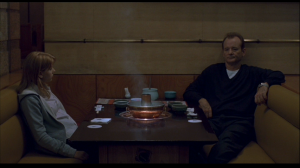 Made on a budget of just $4 million, the film tells the story of Bob Harris (Bill Murray), an ageing actor who is in Tokyo filming a whisky commercial for the tidy sum of $2 million, and Charlotte (Scarlett Johansson), a recent philosophy graduate who is staying in the city whilst her husband (Giovanni Ribisi) is shooting on location. The pair, who are staying in the same hotel, form a bond over their mutual sense of isolation and sense of dissatisfaction with life. It’s an endearingly simple concept that transcends time, age, social class or any other distinguishing barrier – feeling alone is something that we all experience at one time or another.
Made on a budget of just $4 million, the film tells the story of Bob Harris (Bill Murray), an ageing actor who is in Tokyo filming a whisky commercial for the tidy sum of $2 million, and Charlotte (Scarlett Johansson), a recent philosophy graduate who is staying in the city whilst her husband (Giovanni Ribisi) is shooting on location. The pair, who are staying in the same hotel, form a bond over their mutual sense of isolation and sense of dissatisfaction with life. It’s an endearingly simple concept that transcends time, age, social class or any other distinguishing barrier – feeling alone is something that we all experience at one time or another.
Murray and a then 19 year old Johansson are perfectly cast as the central duo – Coppola reportedly said that she would never have made the film without Murray on board and that she wrote the part with him in mind. This is clear from the start – Murray brings just enough of his trademark sarcasm and aloofness to the role and is almost solely responsible for the comedic elements. Meanwhile, Johansson is mature far beyond her years and perfectly encapsulates that feeling of lacking direction. In an interview with Time in 2003, Coppola said:
“I liked that idea of juxtaposing a midlife crisis with that time in your early 20’s when you’re, like, what should I do with my life”
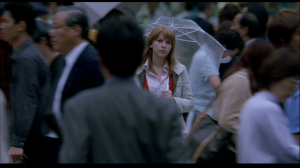 It’s this idea that makes the film stand out – the two points in life actually have a lot in common with each other, from recklessness to feelings of dissatisfaction and confusion, and gelling them together proves to be much more effective than a narrative about two people of the same age would be. Coppola was inspired by Humphrey Bogart and Lauren Bacall’s relationship in The Big Sleep, and I know that with the film she intended to present a romance, but I personally perceived it as being much more grounded in friendship and empathy, with the characters finding refuge in each other from their own sense of loneliness.
It’s this idea that makes the film stand out – the two points in life actually have a lot in common with each other, from recklessness to feelings of dissatisfaction and confusion, and gelling them together proves to be much more effective than a narrative about two people of the same age would be. Coppola was inspired by Humphrey Bogart and Lauren Bacall’s relationship in The Big Sleep, and I know that with the film she intended to present a romance, but I personally perceived it as being much more grounded in friendship and empathy, with the characters finding refuge in each other from their own sense of loneliness.
Lost in Translation is rich with potential readings, and analysis of the film vary with interpretations including criticism of modernity, an example of ‘post-romantic’ cinema and a critique of the concept of monogamy. Whichever way you look at it, the sense of isolation and being ‘lost’ is the central theme of the entire film, and every creative decision points towards enforcing the idea. Setting the film in Tokyo gives the immediate sense of the characters being ‘lost’ in an alien culture. The film proved to be generally unpopular with Japanese critics, many of whom remarked that the film offered a negative portrayal of Japanese culture, but I think the point was not to accurately present the culture but instead to portray the way in which US tourists perceive and deal with the culture. Some have even gone so far as to argue that the film is actually a comment on the unwillingness of US tourists to engage with different cultures, but I’m not sure that is the case so much as it is using the location as a literal depiction of the characters prevalent feelings of being misplaced.
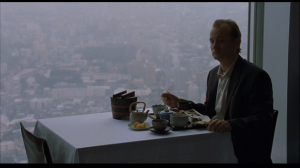 Coppola shows significant insight into cultural differences, and in some instances she adopts a ‘turning of the tables’, best shown in the dryly hilarious commercial shooting scene. We see the Japanese crew place their perceptions of the West on Murray, asking him to channel the likes of Roger Moore’s James Bond – I see this as a pretty funny way of showing how Western cinema has been pushing its views on Eastern culture for decades.
Coppola shows significant insight into cultural differences, and in some instances she adopts a ‘turning of the tables’, best shown in the dryly hilarious commercial shooting scene. We see the Japanese crew place their perceptions of the West on Murray, asking him to channel the likes of Roger Moore’s James Bond – I see this as a pretty funny way of showing how Western cinema has been pushing its views on Eastern culture for decades.
I’m also a big fan of Anna Faris, who plays out the stereotype of a bubbly American film star, a significant contrast to the more thoughtful Charlotte. Coppola uses contrast constantly through eastern and western cultural differences, age and in this case personality, all creating the feelings of isolation that are so keenly felt by Bob and Charlotte.
As fantastic as the script and the acting was, my favourite thing about the film is without a doubt the stunning visuals. The cinematography is beautiful, with shadow and reflection being constantly used to again enforce the sense of isolation. The Park Hyatt Tokyo Hotel, where the film was shot on location, is engaging in it’s simplicity and modernity – the fact that they were only aloud to film in the middle of the night or in hallways/communal locations proving to be a benefit.
 Lost in Translation is a great film. It’s the sort of film you can watch repeatedly and, depending on your mood, come away with a different interpretation every time. It’s a film that was both thought provoking and wonderful to look at, and one that has made me really excited about continuing on my #52FilmsByWomen journey.
Lost in Translation is a great film. It’s the sort of film you can watch repeatedly and, depending on your mood, come away with a different interpretation every time. It’s a film that was both thought provoking and wonderful to look at, and one that has made me really excited about continuing on my #52FilmsByWomen journey.
Find out more about #52FilmsByWomen here.
All images courtesy of FilmGrab.
